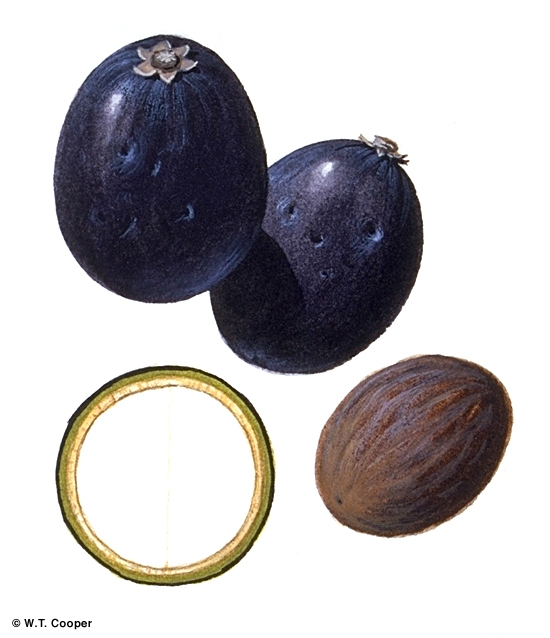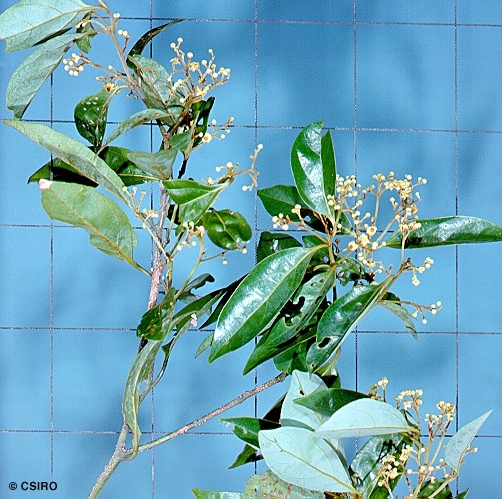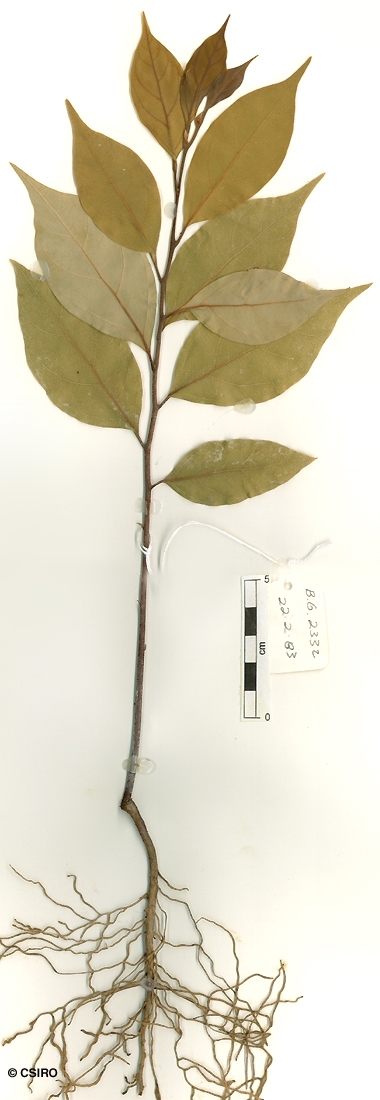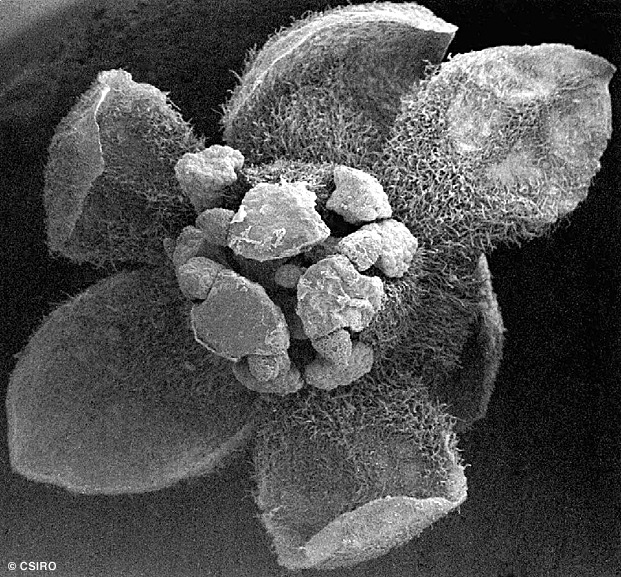Australian Tropical Rainforest Plants - Online edition
Endiandra acuminata C.T.White & W.D.Francis







White, C.T. & Francis, W.D. (1920) Queensland Department of Agriculture and Stock. Botany Bulletin 22: 31. Type: Yarrabah, Rev. N. Michael.
Walnut, Brown; Brown Nut; Brown Laurel; Brown Walnut
A thin cream or pale brown layer generally visible beneath the subrhytidome layer before the first section of the outer blaze. Cream stripes may be present in the outer blaze.
Twigs +/- terete, clothed in straight, appressed, white or pale brown hairs. Leaf blades about 6.2-10.5 x 2.2-4 cm, usually glaucous on the underside, clothed in straight, appressed, white or pale brown hairs. Midrib usually depressed, sometimes flush with the upper surface. Petioles flat or channelled on the upper surface. Oil dots visible with a lens. Domatia, if present, are small inconspicuous foveoles.
Fruits ellipsoid about 30-32 x 17-21 mm. Seed about 23-25 x 11-16 mm. Cotyledons cream.
First pair of leaves elliptic to lanceolate or ovate, about 50-95 x 15-40 mm, glaucous on the underside. At the tenth leaf stage: leaf blade elliptic to ovate, about 100 x 40-45 mm, apex acuminate to mucronate or apiculate, base cuneate to attenuate, leaves glaucous on the underside, hairy on the upper surface along the midrib; oil dots numerous, visible only with a lens. Petiole about 10-12 mm long, hairy. Seed germination time 59 to 569 days.
This species has been the subject of a certain amount of confusion in the timber industry in the past, but it does produce millable logs and the timber is marketed as Brown Walnut, a useful general purpose timber. Wood specific gravity 1.10. Hyland (1989).





